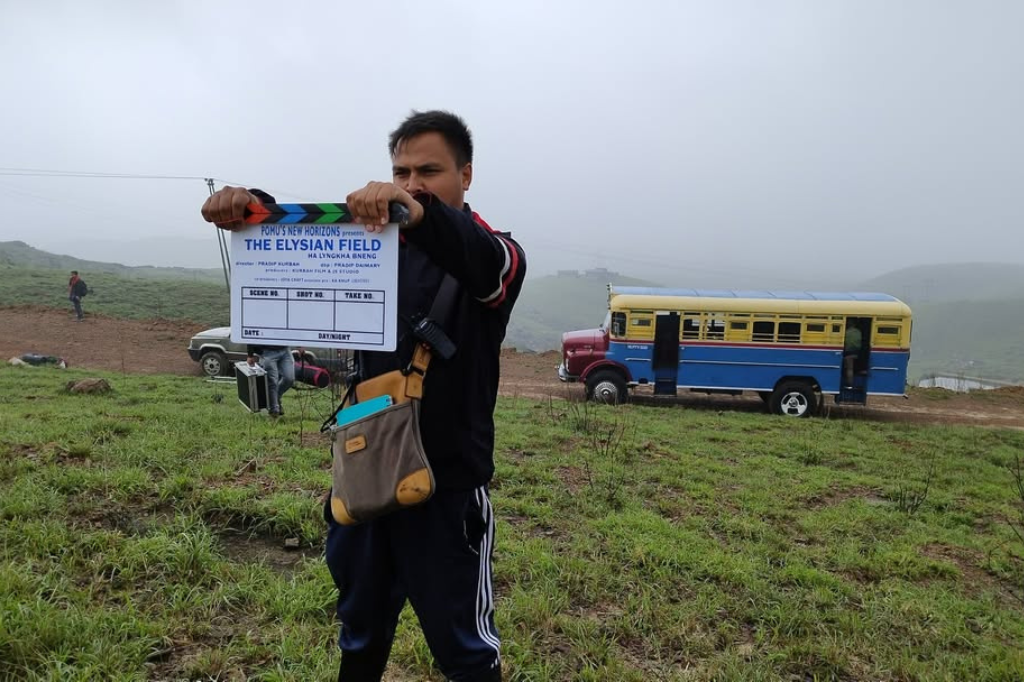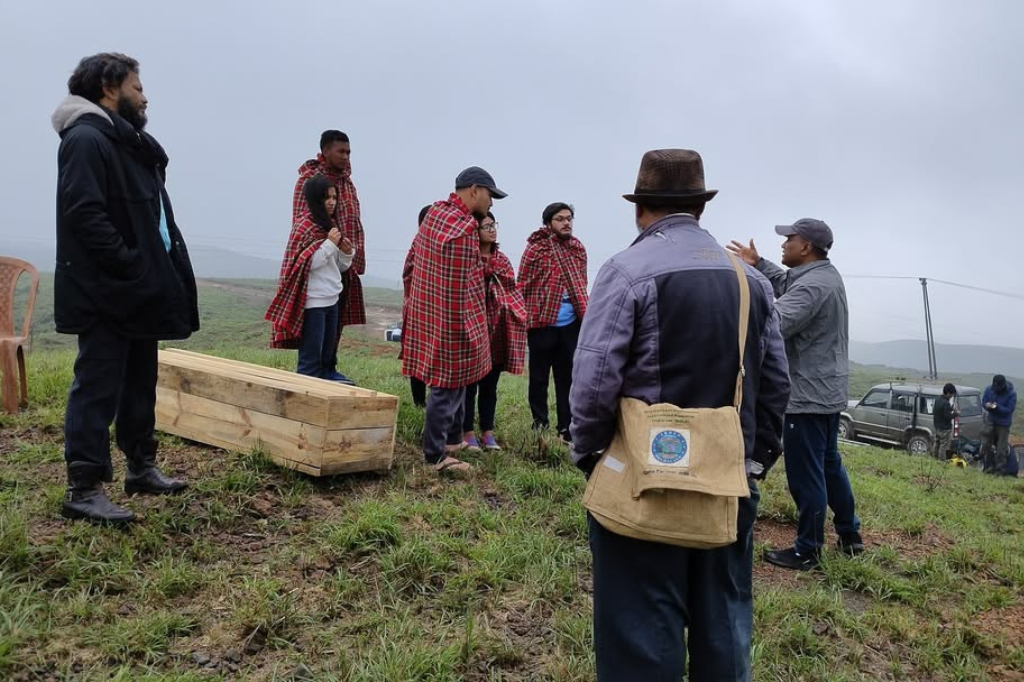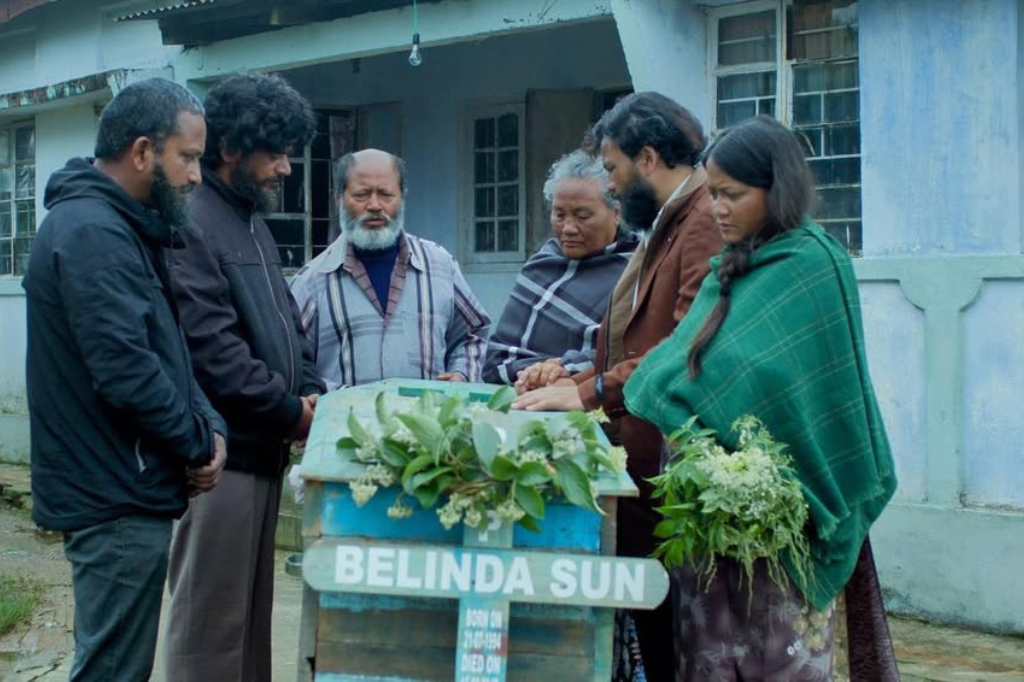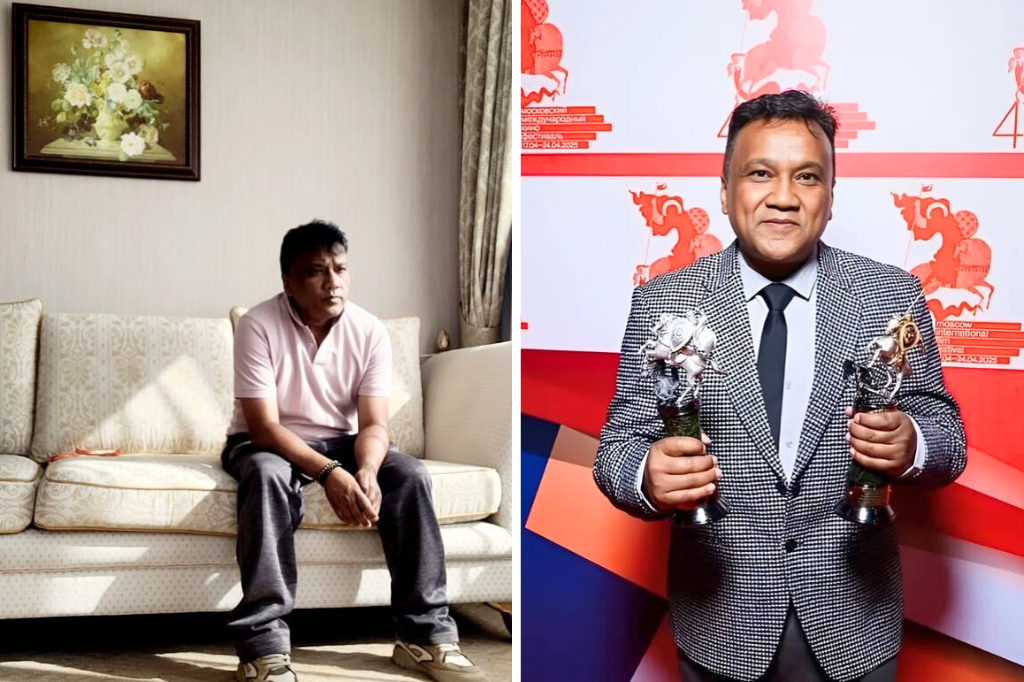From the mist-covered hills of Meghalaya to the global stage of the Moscow International Film Festival, Pradip Kurbah’s cinematic journey is as remarkable as the stories he tells. A high school dropout turned self-taught filmmaker, Kurbah began his career behind the scenes in Bollywood and Tollywood as an assistant director. But it was his deep connection to his Khasi roots that would eventually define his voice and his legacy.
Today, Kurbah stands as a three-time National Award winner and one of India’s most important regional filmmakers, breathing new life into Khasi-language cinema. With a wacky sense of humour that often comes through on his social media, he’s known not only for his warm personality but also for his unflinching storytelling. Kurbah says, “I tell stories rooted in us and our evolving realities.”
His latest film, Ha Lyngkha Bneng (The Elysian Field, 2025), is a deeply meditative reflection on solitude, death and our diminishing sense of community. Laced with lyrical imagery and grounded emotion, the film has earned Kurbah international acclaim – including Best Film, Best Director, and the NETPAC Award at the 47th Moscow International Film Festival – a historic moment for the Khasi film industry.
In this candid conversation, Kurbah opens up about his unconventional path to filmmaking, his passion for nurturing local talent, and why the essence of community is at the heart of everything he creates. From Ri: Homeland of Uncertainty (2013), to Onataah: Of the Earth (2016), Iewduh: Market (2019), and now Ha Lyngkha Bneng, his work continues to amplify the unheard voices of Northeast India, capturing the pulse of a people often overlooked by mainstream cinema.
Read on to step into Pradip Kurbah’s world – where stories are not just told, but lived, remembered and fiercely preserved.

From your early films like Ri, Onaatah, and Iewduh to Ha Lyngkha Bneng, how has your storytelling evolved over the years? What themes have remained constant across your journey?
Over the years, my storytelling has become richer and more layered. In Ri, Onaatah, and Iewduh, I focused on personal journeys set against the social realities of Northeast India. But with Ha Lyngkha Bneng, I tried to go deeper….using longer shots, subtle silences and a wider perspective to let the audience truly feel the characters’ worth.
Despite the changes, some themes remain constant: grappling with pain, seeking forgiveness, longing for community and finding strength in home and resilience. No matter the story’s setting, I keep returning to universal themes like grief, healing and connection.
You’ve taken on diverse subjects – from insurgency to intimate human stories. How do you choose your film topics, and what draws you to them?
I’m drawn to stories that feel real and urgent…whether about social unrest, injustice, or the quiet struggles people face in their everyday lives. Sometimes, it’s a newspaper article or a conversation in the market that sparks an idea. What matters most to me is honesty and hard work. If a subject moves me deeply, I believe it can move others too.

As a self-taught filmmaker who once assisted on major Bollywood projects, how has that unconventional path shaped your approach to directing?
Coming from Meghalaya, I didn’t have access to film school. I’m a school dropout, so I learned by assisting other directors and observing the process closely. This hands-on training made me value teamwork and the flexibility required on set.
Yes, I got the chance to be part of Bollywood and learned a lot of tricks and traits about how to approach a film. But with every project, the approach changes. I’m not afraid to try new things, make mistakes, or break conventions. My style has been shaped by necessity and resourcefulness. I always work with what I have and strive to tell the most authentic story I believe in.
Your latest film Ha Lyngkha Bneng won Best Director, Best Film, and the NETPAC Award at the Moscow International Film Festival. What did that recognition mean to you personally and for Khasi cinema globally?
It was a huge honour. More than anything, it’s a win for the entire team. Without them, it wouldn’t have been possible to reach where we did. Everyone worked so hard. This is the recognition we’ve longed for over the years – the result of our belief in Khasi stories.
For Khasi cinema, it proves that our local voices matter and can be celebrated globally. It brings visibility to our language, our culture and the unique experience of Northeast India. Of course, there’s still a long way to go.
Winning both Best Director and Best Film is a rare double honour. Do you feel this moment could open more international doors for filmmakers from Meghalaya and the Northeast?
Definitely. It shows that our stories are powerful beyond our own region. It encourages other filmmakers from Meghalaya and the Northeast by proving that it’s possible to reach bigger audiences, international festivals, and even global distributors.

The film’s visual language – long takes, wide shots -feels immersive and deliberate. What guided your choices in the cinematography of Ha Lyngkha Bneng?
It was a deliberate choice…to create an emotive and contemplative experience. These visual elements allow the audience to connect deeply with the characters’ emotions and reflect the rhythm of the East Khasi Hills village life.
The unhurried pace, the natural landscape and the subtle gestures create a meditative space that enhances the emotional narrative. Even in Moscow (during the film festival), the audience said they felt like they were part of the story…watching the real lives of real people unfold.
The choir and carols elements in the film seem almost spiritual, echoing Khasi mourning traditions. How did that motif emerge during writing and production?
It emerged very organically during the writing and production phases. These choir and carol elements are deeply rooted in Khasi mourning traditions. These spiritual expressions of grief became a powerful motif in the film -underscoring the themes of loss and remembrance. Incorporating them helped us honour cultural authenticity while adding a hauntingly beautiful emotional and symbolic layer to the film.
You’ve said your films express universal emotions – grief, loneliness, community – through a distinctly Khasi lens. How do you strike that balance between local authenticity and global resonance?
If you’re truthful about the local experience, emotions like grief, hope, and loneliness become universal. Using the Khasi language and customs makes the film deeply authentic, but those core emotions can touch anyone. I focus on shared humanity in every story while also honouring what makes our culture unique.

Ha Lyngkha Bneng was filmed over several seasons, with reshoots for continuity. How did the extended timeline and natural environment shape the final film?
We had to be patient and flexible…adapting to changing light, weather and scenery. Sometimes these changes delayed production, but they added richness and authenticity to the final frames. It was part of the plan from the beginning. I was inspired by a poem by John Keats – The Seasons of Life, and wanted the film to reflect that passage of time.
The Meghalaya government supported the film with Rs 30 lakh and an OTT release. How critical was this backing, and what more can institutions do to uplift regional cinema?
The government’s support was critical to completing the film and ensuring wider distribution. Support like this is vital for local filmmakers, as it helps us get the resources we need and brings our work into a broader cultural framework.
I’ve been in this field for over 30 years, and it’s encouraging to finally see such backing. The government is also funding 30–40 per cent of my next film (Moon). This is a great moment for filmmakers from our State – to grab the opportunity, tell honest stories and help grow the cinematic culture of Meghalaya.
Tell us about Moon. What inspired you to tell this story, and how do you hope audiences will connect with the universal emotions it explores?
My new film Moon is supported by Hello Meghalaya and Shankar Goenka. I’m happy to share that it has been selected for the Asian Project Market (APM) in Busan this September. Being part of APM is a big blessing – it gives me the chance to meet producers and funders who can help bring Moon to life. The film still needs support to complete its budget, and I’m hopeful that with this selection, I’ll be able to bring more producers on board.
Moon is a story about the quiet pain people carry and the guilt we hide inside. Like the moon, which shines only by reflecting the sun, the characters in this story find their light through others – through love, truth, and hope.

You’ve highlighted how major OTT platforms often overlook regional films. What changes would you like to see in how these platforms support indigenous storytelling?
Major OTT platforms in India have largely overlooked films from the Northeast. I still remember how difficult it was to get Onaatah onto any major platform. But now, with the launch of Hello Meghalaya, we finally have our own regional OTT platform. It’s empowering…anyone in India who wants to watch a Khasi film can now access it easily. It helps us reach a larger audience and strengthens our storytelling ecosystem.
Finally, what cultural or social stories from Meghalaya are you most excited to bring to the screen next?
Looking ahead, I want to keep exploring cultural and social narratives from Meghalaya…stories that reflect our communities, their evolving realities and the personal journeys within them.
I’m especially interested in voices and perspectives that haven’t yet found a platform – stories that honour both our heritage and our future and contribute to building a cinematic tapestry that’s honest, nuanced and deeply rooted in our land.







